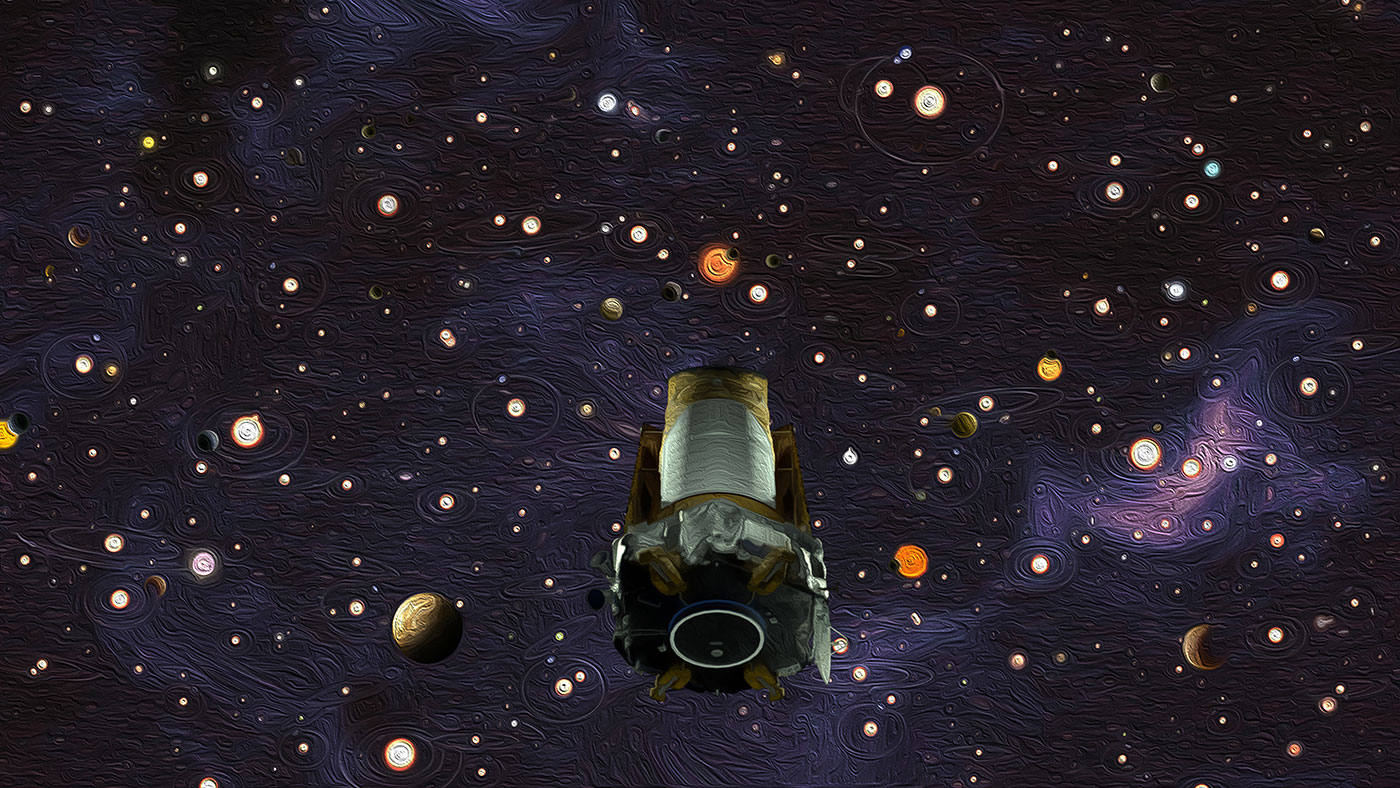Eric B. Ford, professor of astronomy and astrophysics at Penn State and one of the leaders of the research team, commends the Kepler space telescope for providing the data helpful for future astronomical missions.
Kepler’s data provides the most accurate estimate of the frequency that planets that are similar to Earth in size and in distance from their host star occur around stars similar to our Sun.
The researchers created a new model which simulates ‘universes’ of stars and planets and then ‘observes’ these simulated universes to determine how many of the planets would have been discovered by Kepler in each `universe.’ Ford concludes:
Knowing the rate that these potentially habitable planets occur will be important for designing future astronomical missions to characterize nearby rocky planets around sun-like stars that could support life.
A paper describing the model appeared on August 14, 2019, in The Astronomical Journal.
Data provided by Kepler space telescope
Eric Ford said that it is easier to identify planets that are close to their stars compared with small planets that are located far away from their stars, as discovered by the Kepler space telescope.
To overcome this deficiency of Kepler space telescope, researchers designed a novel approach using properties and calculations inferred from information provided by Kepler.
With the knowledge, simulations are made which can determine the number of planets per star and how it relates to planet size and its orbital distance.
With the simulation technique, the research team can account for several effects not included in past research works.
Planets with biomarkers
Research studies around exoplanets are essential for the discovery of planets like Earth and other space ventures that will be embarked on in the future. In space, scientists practically lookout for biomarkers; substances that point to the existence of life at a point in time.
Planets with biomarkers are pointers that they are located in habitable -zones, capable of supporting liquid water on their surfaces.
The researchers have been able to postulate that planets with sizes close to that of the Earth exist in every four stars.
These planets have orbital ranging from 237 to 500 very close to Earth and three-quarters to one-and-a-half times the size of Earth. ‘
Characterization of planets and stars
The research findings relating planets size and orbital period is extremely helpful for optimizing surveys for exoplanets.
Kepler space telescope discovered several stars and planets within 2009 and 2018 when it exhausted its fuel supply and got retired by NASA in 2018.
The space telescope was able to spot the stars and planets by capturing transit events which occur when the orbit of the planet goes in between the space telescope and the stars.
Astronauts were able to characterize the planets and stars through information deciphered from their properties and the number of lights reflected or dimmed.
Kepler made the same good achievements by discovering several exoplanets and stars, said astronaut Eric B. Ford.
Eric Ford commended these discoveries and stressed how the information would support more understanding of planetary formation and movement about its axis.
On Oct 30, 2018, NASA officially gave its farewell to the Kepler Space Telescope. The trusty spacecraft with the telescope extended its service long beyond its initial four-year mission before finally running out of fuel.
Researchers placed in safe mode for a brief time to focus on getting the scientific data that Kepler had already collected safely back to Earth.







